Exotic Sago Palm - Care, Toxicity and Most Common Issues
Potted plants are among the most interesting and universal decorations you can use as a part of home interior design. Unusual looking plants which amaze with their extraordinary looks are becoming a popular element. If you decide to add one to your decor, make sure to know its needs and possible issues it might face. Do you like sago palms? Learn what are their characteristics and how to care for them. Thanks to this, you can create the best conditions for it in your home.

What is a sago palm?
Sago palms, or Cycas revoluta are often referred to as potted palms. It’s true that the plant resembles e.g. a date palm. But despite its name and looks, a sago palm has little to do with palm trees. It’s a Cycad originating in China and Japan. That’s why it’s sometimes called Japanese sago palm.
Sago palms grow outside in their natural habitat, and can reach significant heights. But it can be grown as a potted plant as well - especially in cold zones.
If you decide to keep a sago palm at home, make sure to be extra careful. Sago palms are known for their toxicity - the juice they produce is harmful both for humans and pets, including dogs and cats.
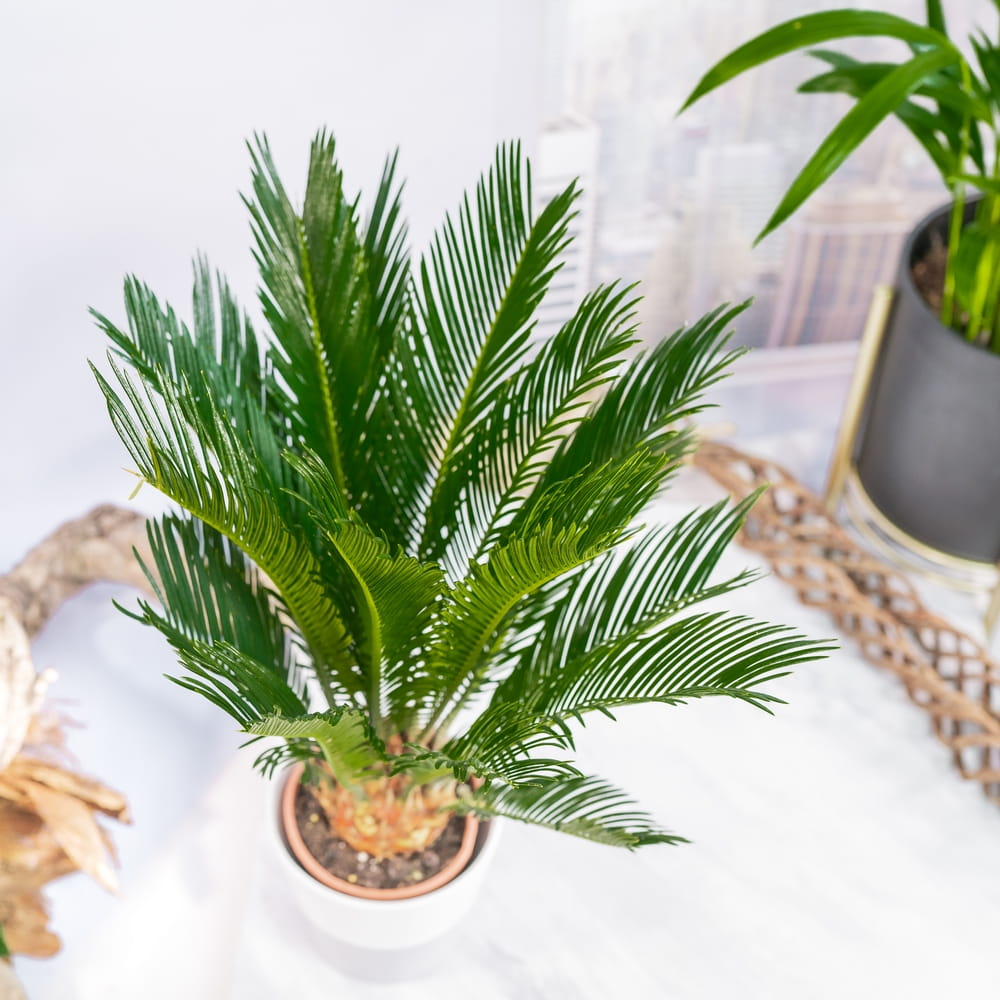
Sago palm - what are the most popular types of this plant?
Cycas revoluta is the basic variety of the plant, and it’s the most popular type across the world. This houseplant will probably appear in your house as well. But there are other types, too - they differ by their spread rate and origins. They are the following:
- Cycas circinalis
- Cycas rumphii
- Metroxylon sagu
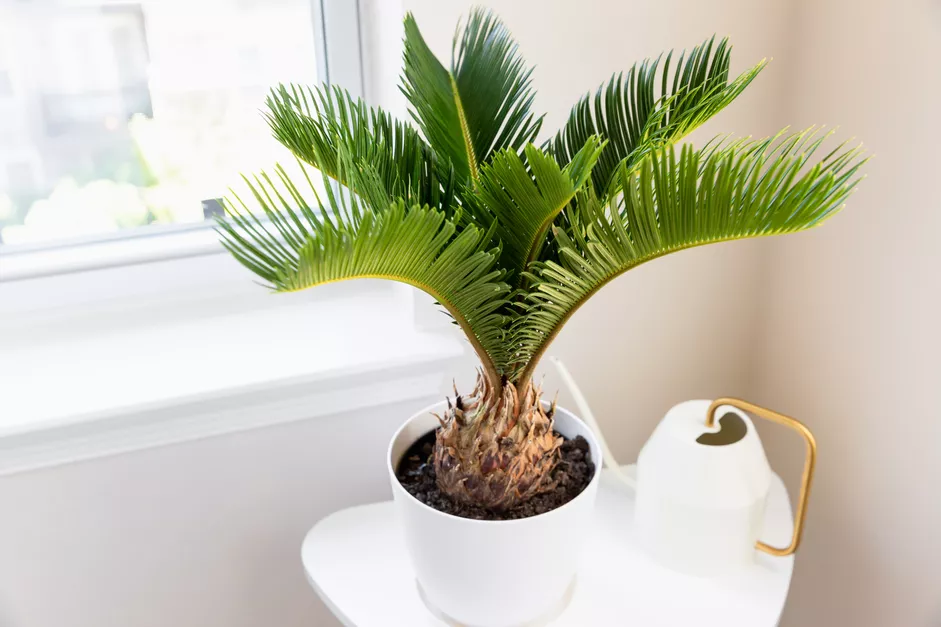
What are the best conditions for a sago palm?
A sago palm is a delicate plant. For this reason, it needs certain conditions, which concerns not only sunlight, but also the soil it grows in, as well as temperature and watering. If you want to keep the houseplant in good shape for a few or perhaps even a dozen years - make sure to provide the best conditions to it.
Do sago palms like direct sunlight?
Sago palms like growing in sun. But keep in mind that the sun rays shouldn’t be too strong - indirect sunlight is the best option. Because of this, a sago palm shouldn’t be placed on a windowsill. The floor by the balcony door or a large window is a much better option. Too strong sunlight might burn the leaves and make them fall off.
If you live in a cold zone, you can put the plant on the balcony or patio in summer. An eastern or southern position is the best option. But remember about one rule - a sago palm can’t be placed in full sun.
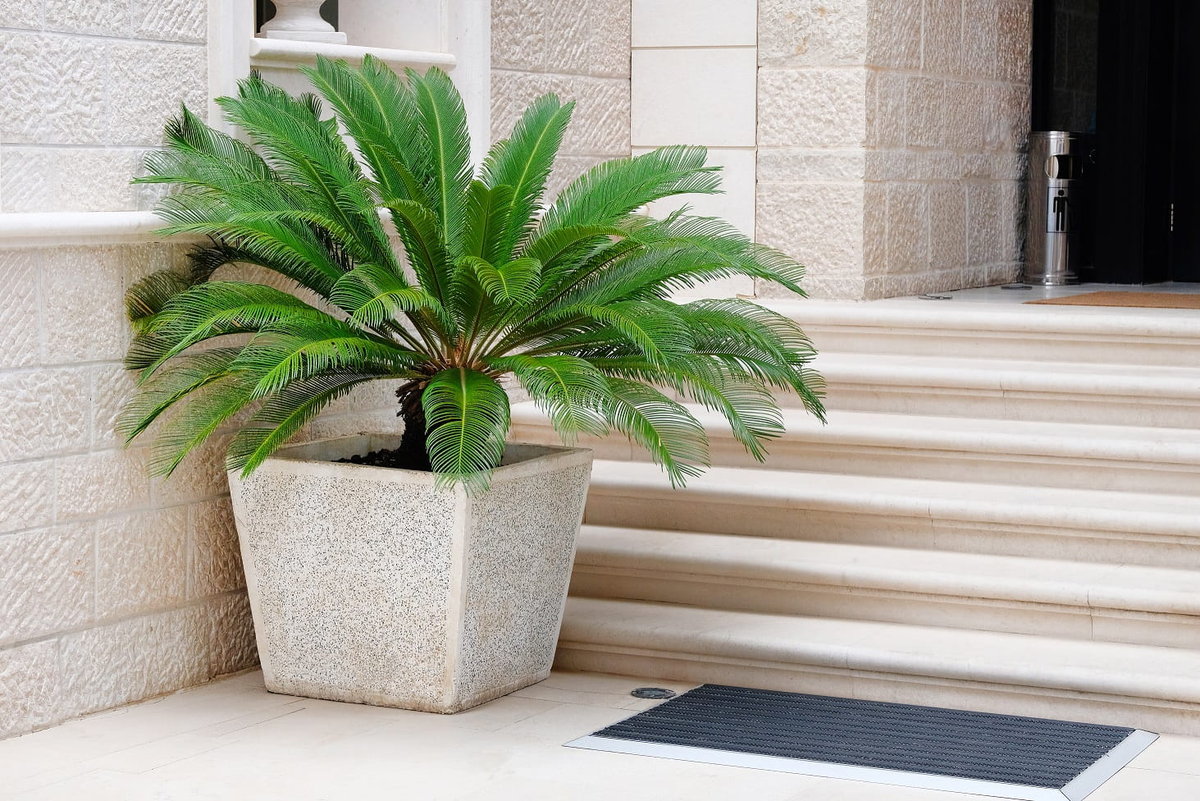
Sago palms - the best soil
Sago palms don’t have any special needs about the soil they grow in - but make sure it’s permeable enough. A sandy soil mix is a perfect choice, in this case. You can create your own mix by combining several types of potting soil, to achieve the best parameters. If you have no prior experience with this, better purchase a mix at a store. Gardening shops offer soils for palms and cacti. Both are good options.
What is the best temperature for a sago palm?
Moderate room temperature between 21 and 22°C is the best option for a sago palm. In such conditions, you can expect the best growth of the plant. It’s a warmth-loving plant. For this reason, don’t let the indoor temperature drop below 15-16°C.
Sago palm - how to water
Sago palms don’t like too much moisture, so be careful when watering the plant. You can mist the leaves with water every few days. Water your sago palm only when the soil in the pot has dried.
Interestingly enough, sago palms are exceptionally resistant to droughts. It’s a perfect plant for those who often forget to water their houseplants. It’s not a problem if you’re planning to leave for a week or two. If a sago palm is the only plant you have, you don’t even have to ask anyone to water it.
Does a sago palm need feeding?
From time to time, it’s good to help your sago palm grow with fertilizer. Don’t do it more than once a month though, and do it when the plant vegetates.
As experts claim, liquid fertilizers are the best option for feeding a sago palm. Such products should contain the following elements:
- nitrogen,
- phosphorus,
- potassium.
How to trim a sago palm?
You don’t have to trim your sago palm - unless the leaves start browning. It’s a common mistake to cut yellowing leaves. In fact, their appearance means the plant needs some elements. In this case, a regenerative process is recommended. Trimming the leaves would only make the plant even weaker. That’s why you should wait until they become fully brown.
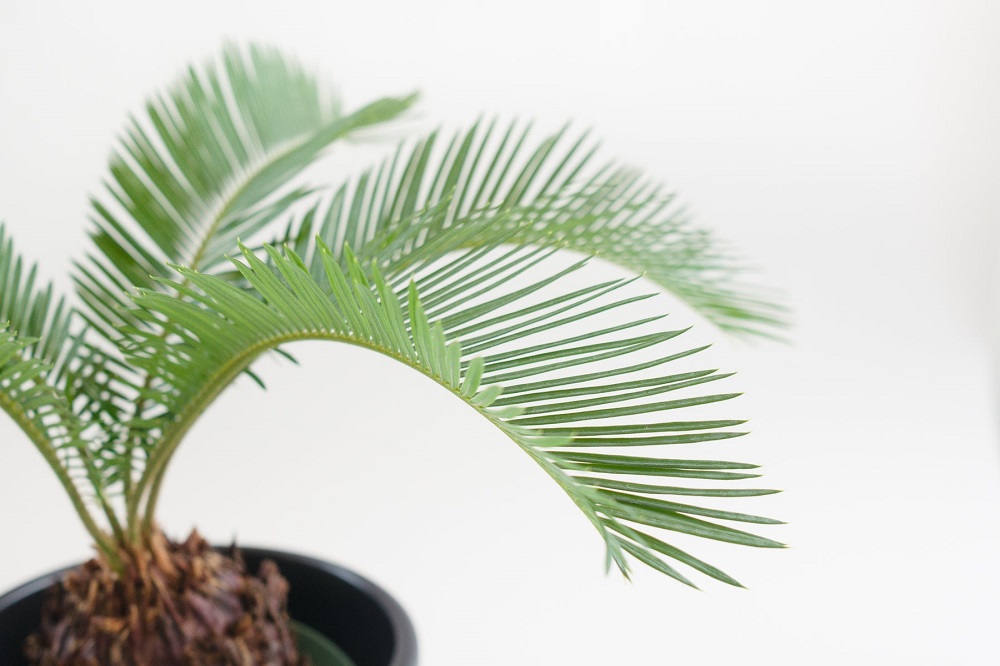
Potted sago palm - most common problems
Overwatering is the biggest threat for a sago palm. Such a situation, combined with a wrong type of soil or an ill-matched pot might cause root rot. If this happens, the plant is not likely to recover. Purchasing a new plant and being careful when watering it is the only solution.
Yellowing leaves is another problem a sago palm might suffer from. It’s a sign the plant lacks some crucial nutrients. In this case, just feed the soil using manganese sulfate and the issue should be solved.
Sometimes, you might notice the leaves of your sago palm look wilted. There are several possible reasons behind it. First, there might be too much water in the pot - make sure to eliminate it first. But the problem might be much more serious. If the plant has not been overwatered, it probably means it has been attacked by a fungal infection. In this case, purchase an antifungal product - it should resolve the issue.
Sago palm indoor - the most common pests
Spider mites are the biggest threat for an indoor sago palm - and for other houseplants as well. How do you know they attacked your plant? You will notice small yellow dots in the pot. Sometimes they are red or brown. Webs on the leaves are a characteristic sign of spider mites.
How to tackle these pests? You can use a home remedy - spray the leaves with a mixture of soap, oil and water. If you lack experience, a store-bought anti-pest product is a much better solution.
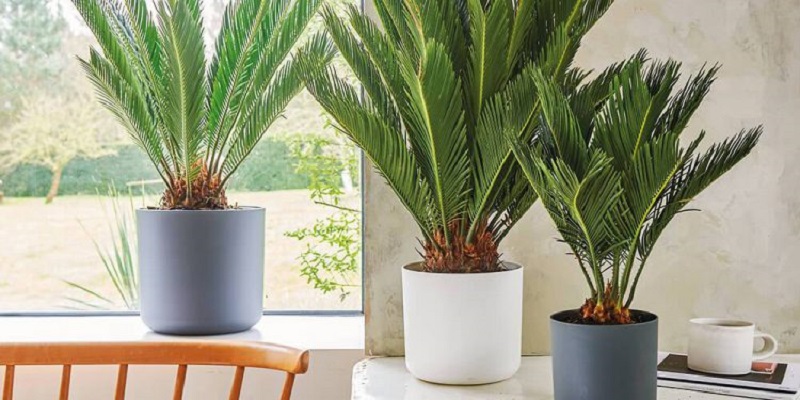
📍 Sago palms - what are they?
A sago palm belongs to the Cycad family, and it originates in China and Japan. This plant resembles some types of true palms. It can be as tall as a tree in its natural habitat. It can be grown as a houseplant as well.
📍 How to take care of a sago palm?
Sago palms are sensitive houseplants, so make sure you pick the right place and soil for it to grow. The plant doesn't like frequent watering. You can feed the sago palm from time to time. If needed, trim brown leaves.
📍 How to water a sago palm?
A sago palm doesn't need frequent watering. It means you can sprinkle the leaves with water every few days. Pour some water into the pot only after the soil has dried.
📍 Why does my sago palm have yellow leaves?
A sago palm might get yellow leaves for a few reasons. Too much water is one of them. But yellow leaves typically indicate the plant needs some nutrients. Just fertilize the plant and it should get revived.
Featured articles




